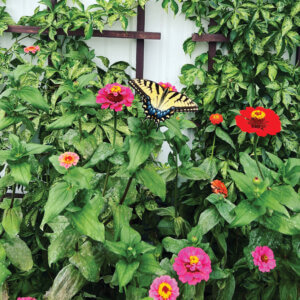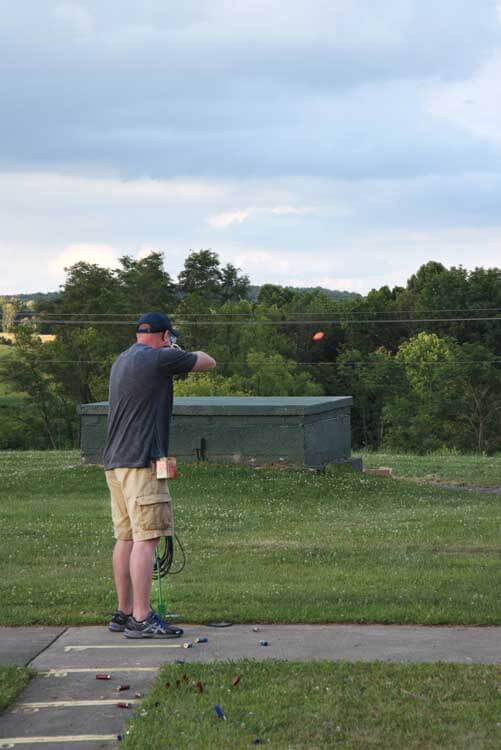
West Virginia trapshooting champion Nick Harden is at home on the (shooting) range.

Like a big league slugger stepping to the plate, Nick Harden plants his feet, fixes his eyes, and quiets himself. His mind wants to remember all the things it knows about form and technique but Harden tries not to think. He has reached the level of his sport where thinking only gets in the way—his body already knows what to do; Harden just needs to let it.
He raises his gun. Now focused, he utters one quick syllable. “Pull.” A hundred things happen almost at once. The automatic throwing machine, hidden in a concrete block bunker, launches a target up into the air. Harden’s eyes relay this information to his brain, which sends instructions to the muscles in his shoulders, chest, biceps, triceps, lower back, and abdomen, which raise the barrel of his 12-gauge Kreighoff shotgun with deadly precision to meet its mark. His right index finger squeezes the trigger. A shell explodes from the barrel of the gun, releasing a spray of lead shot that obliterates the flying orange disc at almost the same time Harden’s brain registers the sound of the gunshot.
The whole thing takes less than two seconds. And it will only be a few more seconds before Harden must go through the whole procedure again. And again. And again. By the end of a trapshooting competition, he will have repeated these movements many dozens of times. And, far more often than not, he will do it exactly right.
At this year’s 96th annual West Virginia Trapshooting Championships, held in early July at the Brooke County Sportsmen Club in Wellsburg, Harden beat out 253 fellow shooters from nine states to capture three of the event’s four titles. He won one of those titles, “high all around,” by successfully nailing 379 out of 400 shots he fired in a day’s competition.

It is the first time Harden has ever won a title at the state shoot, but the recognition was a long time coming for the 32-year-old policeman from South Charleston. His father, Bob, started trapshooting when Harden was four years old and got his son involved in the sport when he was about eight years old. “As soon as I could hold a gun,” Harden says.
His older brother and even their mother also got involved in the sport. They frequented a small, one-trap range near their Kanawha County home. “We would spend weekends and evenings there when there weren’t (competition) shoots,” he says. “It was a family event.”
Then, when Harden was a young teenager, he developed another obsession after his brother brought home a motorcycle. The family largely gave up gun sports and devoted their time to racing, traveling up and down the East Coast to events. “I loved the motorcycles. We had 13 at one time,” Harden says. “Of course, when responsibilities came along, I gave all of that up.”
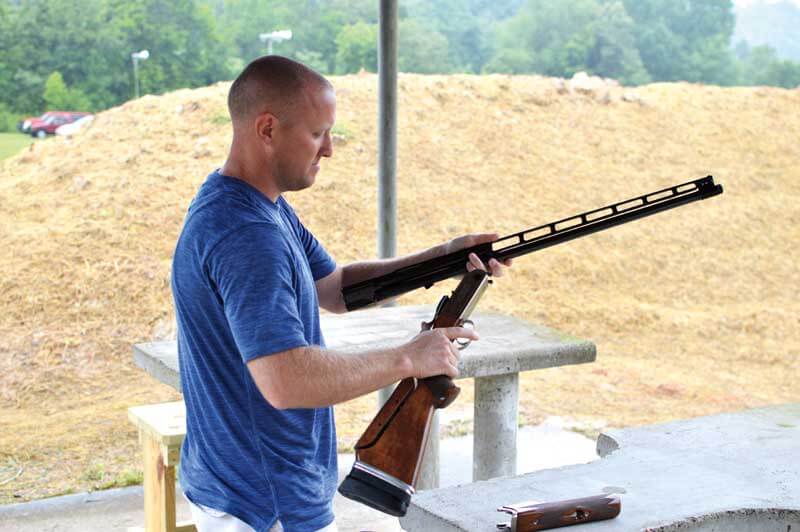
“We would spend weekends and evenings there when there weren’t (competition) shoots, it was a family event.”
Nick Harden, trap shooter
He returned to trapshooting around 2009. But jumping back into the sport wasn’t anything like riding a bike. Time had dulled Harden’s reflexes. He was slow and inaccurate. And the only remedy was to get back out to the shooting range and go through the motions over and over and over until it felt natural again.
The sport of trapshooting originated in the mid-1700s in England as a way for bird hunters to practice their skills before heading into the field. Its name is derived from its bloody beginnings. Since artificial targets hadn’t been invented yet, when early trap shooters hollered “pull,” someone would release a live bird—or sometimes a bat—from a trap.
Lucky for pigeons and bats everywhere, artificial targets came into use in the 1860s. It wasn’t so much a humane decision as it was a frugal one. People back then didn’t care so much about animal rights, but live birds cost good money. So sportsmen began to use targets that resembled Christmas ornaments: colored glass balls filled with feathers or sawdust.
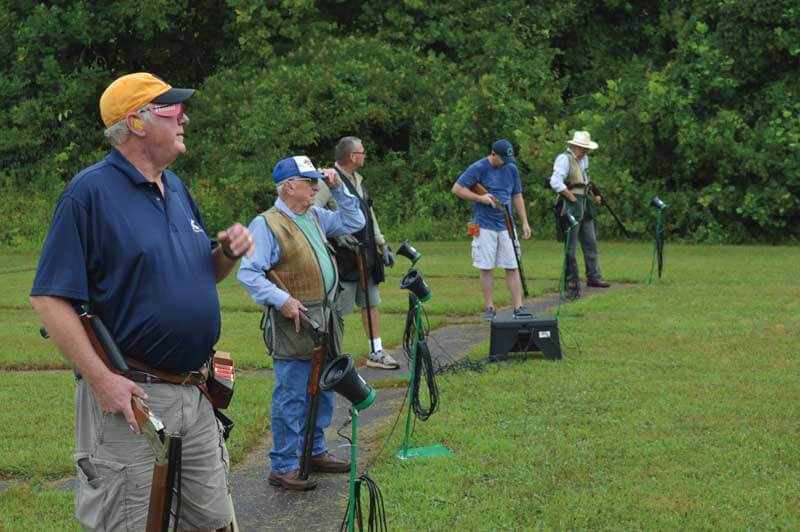
Early targets were hardly perfect. They were difficult to bust and their flight was unpredictable, not to mention the obvious hazards that come with shards of glass falling from the sky. In 1880, George Ligowsky solved each of these problems when he introduced the world to clay targets. He reportedly found inspiration while watching children skip shells on the seashore. Ligowsky examined the shells and realized their concave bottoms and convex tops stabilized their flight through the air. He fashioned his “clay pigeons” in a similar shape, and today’s targets mostly still hold to Ligowsky’s original design. They’re even still called “clays,” although modern targets are actually made from limestone and pitch.
Over time trapshooting became less about bird hunting and turned into a sport all its own. Trapshooting made its first appearance at the second modern Olympic Games, held in 1900 in Paris, France, and is still a medal event more than a century later, one of only a handful of early events to appear at the 2016 Rio Olympics.
The same year the sport debuted on the world stage, a group of enthusiasts in the United States formed the sport’s main governing body, the Amateur Trapshooting Association. The organization now has around 1,000 gun clubs around the country. Members shoot more than 55 million targets every year at more than 6,000 registered tournaments, including the West Virginia Trapshooting Championships.
The competition is divided into three events: singles, doubles, and handicap. In each event, shooters take turns firing at targets from five positions behind the traphouse. In singles events, where shooters receive one target at a time, and doubles, where competitors get two targets at once, shooters stand 16 yards behind the traphouse. Competitors also receive one target at a time in handicap events, but their distance from the traphouse can be anywhere from 18 to 27 yards, depending on the shooter’s age and gender.
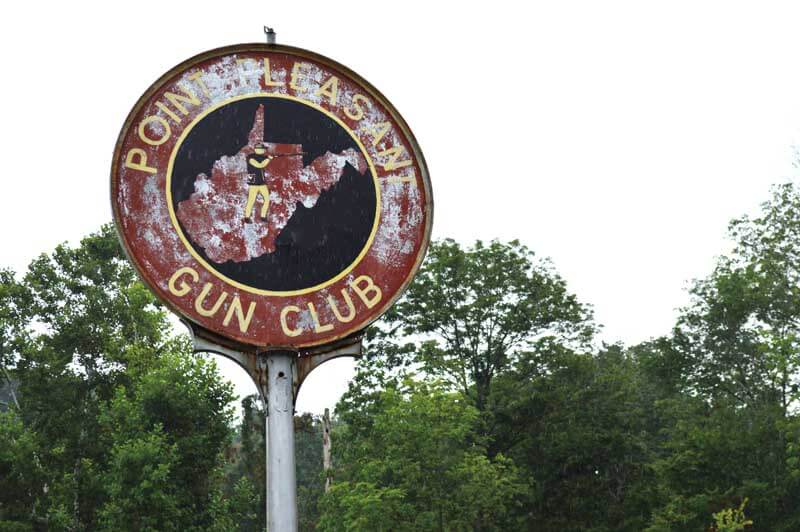
the shooting ranges Nick Harden uses to practice his sport.
Most years, Harden begins preparing for the state shoot months in advance, usually in April once the cold weather breaks. But sick family members and other responsibilities kept him away from the shooting range for much of 2016, so he entered this year’s event without much expectation of success.
He made a good showing in the first two days of competition, but by the middle of the singles championship on day three, Harden was certain he had lost. He busted 97 of his first 100 clays in the event. Even missing three targets is usually enough to lose a competition. “At that point I figured it was pretty much over. For me, the idea of winning it was over,” he says.
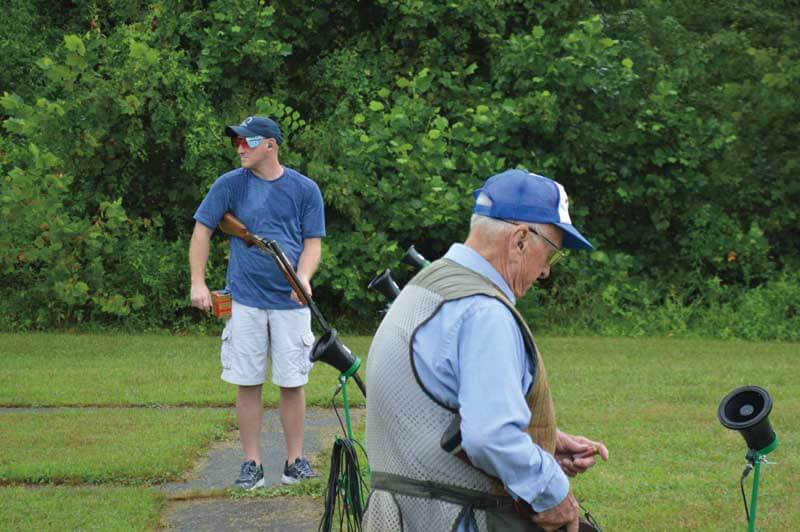
Accepting defeat, Harden resolved to just enjoy the rest of the competition. He ended up shooting a perfect set, blowing apart each of the next 100 targets. To his surprise, Harden found himself tied for first place with two other shooters, meaning the competition would have to be settled with a shoot-off.
It was stiff competition. Robert Judy had won the state shoot’s junior championship for two previous years. Todd Sauble, meanwhile, was the state singles champion for two years running, having narrowly defeated Harden in 2015 in a seven-round shoot-off that lasted late into the evening.
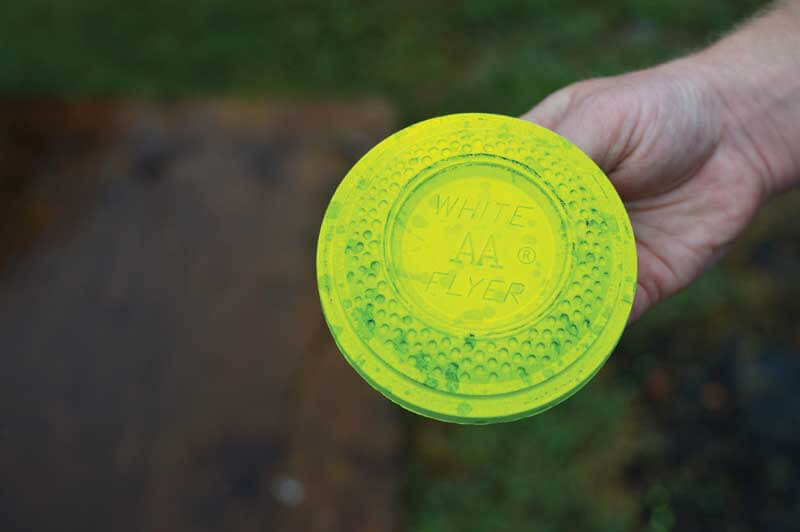
Harden, Judy, and Sauble set up for their first, 25-target shoot-off. As the rotated through the positions, Sauble missed a target, knocking him out of the competition. Harden and Judy both shot perfect rounds to remain tied. Then, in the second set, Judy missed a target. Harden shot another perfect round to win the championship. Before the weekend was over, he also won the handicap championship and was named “high all around” champion, earning the highest combined score in all three championship events.
His father, Bob, still smiles to think about that day. Two decades after he introduced his son to the sport, he watched as Harden took his place as one of the state’s best trap shooters. “You couldn’t have wiped the grin off my face if you’d tried,” he says.
Harden is humble about the accomplishment, however. He will admit he has “kind of hit a stride,” but he also knows trapshooting is a game of milliseconds and millimeters. Your reflexes can always be a little faster, your shots a little more accurate. “I’ll never know it all. There’s always something you can work on,” he says. “It doesn’t take much to miss.”
This story was originally published in the October 2016 issue of Wonderful West Virginia. To subscribe, visit wonderfulwv.com.
written and photographed by Zack Harold





